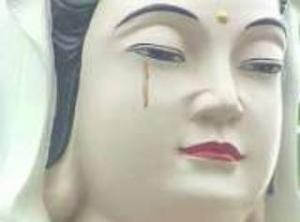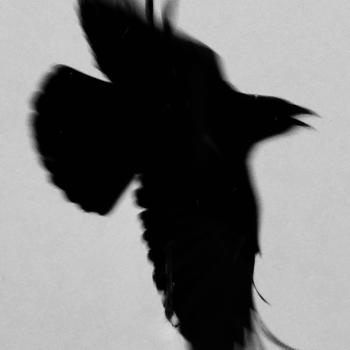
Studying Hakuin, the real guy keeps showing up – a practitioner of great ability!
In this post, I turn back for a moment to kenshō, and then focus on the gritty business of post-kenshō cultivation (1). Along the way, we’ll touch on a theme or two seldom discussed in polite Zen conversation.
Let’s begin with a passage I quoted a couple posts back, Hakuin’s Advice For How To Attain Kenshō:
“When you run into [the One Person] without warning, and only then, you will experience a joy of unprecedented depth and intensity. You will soar like the phoenix when it breaks free of the golden net, like the crane that is liberated from its pen” (Complete Poison Blossoms in a Thicket of Thorn [CPB] #8).
Hakuin continued, “Why is that?”
And he answered himself,
“Two streams of tears run down a lady’s jeweled pillow,
Partly because she loves him, partly because she resents him.”
That’s why it’s so great to attain kenshō? To become like a lady with a fancy pillow crying her eyes out?
Well, yes, but it will take a journey to discover why that is. So let’s go!
With the “two streams, etc.” capping phrase, Hakuin is quoting a poem by T’ang poet Li Shen, according to the ever-generous Waddell’s notes. The reference has multiple layers of meaning – a veritable vertiginous thicket of tangled thorns!
Waddell also tells us that Hakuin is indirectly referring to a kōan, “Nan-ch’uan Lives in a Hermitage,” (2) and this is where the implications for post-kenshō cultivation clearly get tangled. I first encountered this Nan-ch’uan kōan in the early ’80’s while practicing just-sitting Zen with Katagiri Roshi. This kōan stopped me cold, gave me nothing to hold onto, and no toe-hold even to approach its subtle, layered and gut-wrenching truth. And even more disturbing, it was clear that there was something here that I hadn’t chewed on yet at all, something that I’d avoided in just-sitting, something way beyond what I understood the buddhadharma to be about. It challenged my idealism.
I tried to set it aside, and really hoped to forget about it, but the damn thing haunted me. Time-and-again I’d stumble on it while studying something else.
Nan-ch’uan lives in a hermitage
It might be better at this point, dear reader, to go (back?) to Facebook and see if anything interesting is happening there, but if you insist on persisting, here is the kōan (3):
“When Nan-ch’uan was living in a hermitage he would go up into the hills to gather firewood with the monks. On one of these occasions he said to a monk he encountered, ‘I am going to gather fuel in the hills. When you cook rice for lunch, finish your own and then bring mine up to me.’ After eating his rice, the monk smashed the pots and dishes and lay down on a sleeping mat. When the monk failed to appear, Nan-ch’uan went down to the hermitage. Seeing the monk lying on the mat, he lay down beside him. The monk thereupon got up and left. Later Nan-ch’uan said, ‘When I was living in that hermitage, I met a monk of great ability. I haven’t seen him around since.’”
What is happening here? Why is Nan-ch’uan going up in the mountain to gather fuel for the way but this other guy gets to cook and eat rice? Instead of sharing the wealth, the monk then smashes the domestic routine – why? Why did the monk then lay down? What did Nan-ch’uan see that he lay down with the guy? What happened between them that the guy then left?
Questions like this niggled and persisted, also melting and clearing over time, as these things tend to do.
And for everything happening here, I’d just like to nod to the homoerotic element. Even if Nan-ch’uan and the person of great ability are the One Person, still, it isn’t often that we get two men lying down together in a kōan. Indeed, I can’t think of another incidence. Now, you might say, “They were Vinaya-following celibates so the ‘homoerotic element’ is just in your own mind.”
Yet, for Vinaya-following celibates too, I believe, lying down together would also be an infraction. The dishes are broken. Something has past, it’s time to lie still for a bit, and then it’s time to move on.
Returning to the kōan, a couple key questions remain: Who was this person of great ability? And where are they now?
When I trained at Bukkokuji, a Rinzai monk from a nearby temple attended every sesshin, arriving just before the sesshin started and leaving right at the end, so there was no opportunity for small talk. I had the incredible pleasure of sitting next to him through sesshin after sesshin. This monk would not only sit the schedule with aplomb, he’d also sit through breaks and kinhin and then would be up all night every night sitting through it all. One of my usually reliable gaijin friends reported that he had seen the mysterious Rinzai monk lie down once for about an hour at about 2:30am. Must have been a really tough day.
Even though this Rinzai monk practiced with extraordinary wholeheartedness, his cultivation was the most effortless I’ve ever seen, like the monk in the photo below. Truly beautiful.

Just as my last sesshin at Bukkokuji was nearing it’s end, I went to the toilet. As I was going in, the ever-sitting monk was coming out. He broke the sesshin rule, looked at me and smiled – somehow he seemed to know that I was leaving – and we exchanged a heartfelt “goodbye” gassho.
Truly a practitioner of great ability. I haven’t seen him around since.
Everything is broken
Nan-ch’uan, though, died in 835. Haven’t seen him since either. Nevertheless, scroll ahead a couple hundred years or so and we find that practitioners in the Zen groves were still chewing on the “Nan-ch’uan Lives in a Hermitage” kōan. Waddell briefs us:
“Once when Ta-hui Tsung-kao’s Dharma heir Wan-an Tao-yen [1094–1164] entered Ta-hui’s chambers, Ta-hui asked him about the koan ‘Nan-ch’uan Lives in a Hermitage.’ Wan-an replied: ‘Two streams of tears run down a lady’s jeweled pillow/Partly because she loves him, partly because she resents him.’ Ta-hui summoned his attendant and told him to remove Wan-an’s name from the duty roster. ‘With just this single turning word,’ he said, ‘you have succeeded in repaying in full your debt to the Buddhas.’
What is it about this capping phrase (“Two streams of tears run down a lady’s jeweled pillow/Partly because she loves him, partly because she resents him”) that showed that Wan-an had completed his Zen work?
One night last week, our dog got really sick. The poor boy spent most of the night pacing about, asking to go out, and occasionally throwing up. At 5:00am, we “woke up” as usual. My wife and teaching partner stayed home with our dog and I staggered off to morning zazen. A half-dozen equally haggard Zennists showed up. Again, the kōan reared its ugly head. Sitting through the darkness, dropping off yet another layer of idealization, the room flooded in soft morning light and the kōan opened yet again.
It turned on this: Who is this lady? She looks a bit like Avalokiteshvara, but she could be you, or the one you share a bed with. Clearly, she has deeply cultivated prajna paramita, and from one eye flow tears of love onto the jeweled pillow, “a joy of unprecedented depth and intensity.” How sublime this very life is!
From the other eye flow tears of pain and resentment. Katagiri Roshi once said, “You won’t know how much pain you are in until you are enlightened.”
Not only you, of course, but all the myriad beings in our off-kilter planet, mistaking a thief for their dear child. So a Miscellaneous Kōan asks, “Why can’t clear-eyed people cut the blood-red thread?”
Why?
Why do tears of resentment flow?
One simple emotional truth is that she didn’t really know what she was getting into. This lady with a jeweled pillow is dealing with an issue of consent, just like a practitioner who has kenshōed. Having tasted the truth of this life, we are called to do whatever we can to help others taste this truth and unfold it fully. Haggard, obstinate, half-hearted living beings, though, are only occasionally interested.
Just so, it has become customary in Zen circles I frequent that when a new teacher receives dharma transmission we offer both congratulations and condolences. Teaching Zen is one-hell-of-a troubling business.
There it is. Idealization is exhausted. Love and resentment, shallow hearts and arrogant minds, a pile of broken dishes. And off we go.
Reminds me of the Bob Dylan’s “Broken,”
“Broken bottles, broken plates,
Broken switches, broken gates
Broken dishes, broken parts,
Streets are filled with broken hearts
Broken words never meant to be spoken,
Everything is broken.”
(1) 修, usually translated as “practice.”
(2) Waddell uses the Wades-Giles romanization of the Chinese characters, like Nan-ch’uan. The more commonly used now, and almost always on this blog, the Pinyin system has this name as “Nanquan.” In Japanese, it’s “Nansen.” In any case, it’s the same guy who killed the cat and was Zhàozhōu’s teacher.
(3) Another translation of this kōan can be found in Records of Transmission of the Lamp, V2: Early Masters, translated by Randolph S. Whitfield, p. 219-220: “When the master was an incumbent of a hermitage, a monk came to see him. The master said to the monk, ‘I am going to climb up the mountain. Wait until mealtime, make the food, and after having eaten yourself, bring some up to the mountain.’ After a while that monk, having eaten himself, just broke all the domestic routines and went to lie down. The master waited but didn’t see him coming, so returned to the hermitage. There he saw the monk lying down, so the master also went to lie down on one side of him. The monk then got up and left. Later, when the master had become an abbot, he said, ‘When I was the incumbent of a hermitage there was once a bright monk, but he was never seen again from that day to this.'”
Dōshō Port began practicing Zen in 1977 and now co-teaches with his wife, Tetsugan Zummach Sensei, with the Vine of Obstacles: Online Support for Zen Training, an internet-based Zen community. Dōshō received dharma transmission from Dainin Katagiri Rōshi and inka shōmei from James Myōun Ford Rōshi in the Harada-Yasutani lineage. Dōshō’s translation and commentary on The Record of Empty Hall: One Hundred Classic Koans, is now available (Shambhala). He is also the author of Keep Me In Your Heart a While: The Haunting Zen of Dainin Katagiri. Click here to support the teaching practice of Tetsugan Sensei and Dōshō Rōshi.












